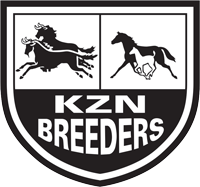| Broodmares – Productivity vs Age – Dr Allen Bechard |
 We discuss the breeding lifespan of mares with Dr Allen Bechard of Almiray Vet Practice who gives some enlightening insights into the effects of age on a broodmare with regards to productivity, fertility and conception.
We discuss the breeding lifespan of mares with Dr Allen Bechard of Almiray Vet Practice who gives some enlightening insights into the effects of age on a broodmare with regards to productivity, fertility and conception.
Mares are individuals and can differ greatly from one horse to the next, but a point to bear in mind is that fertility is fairly heritable and historically, mares have not necessarily been selected for fertility reasons.
A mare’s productivity will be affected by the age she starts breeding. If a mare does begin her breeding career as early as a 3 or 4 year old, there is no reason she should not continue into her late teens or early twenties. This is providing she is sound and well in herself and her reproductive system is not adversely compromised along the way.
With a mare that might be bred later in life, say as an 8-10 year old, her breeding career might not necessarily be prolonged because many reasons for reducing fertility later in life are age-related and not necessarily due to the number of foals.
“Old maiden mare syndrome” which is classically seen in a well-performed sport mares such as a polo, show jumping or eventing mares which are bred at the end of their sporting careers may be in their mid-teen years and are often difficult breeders due to post breeding endometritis susceptibility and degenerative changes to the endometrium.
For those considering the option of purchasing a well-bred ageing mare at a disposal sale or auction on the basis of a well-bred pedigree, it is always better to purchase one in foal. As far as buying an old empty well bred mare is concerned – one would have to consider the following: How well-bred is she? How long has she been barren for? What stallions did she last visit? Was she treated to assist her to conceive? Was a specific reason found for her lack of conception? How old is she?
Take into account the fact that the average brood mare usually produces regular foals until late teens, although cases of mares as old as 26 are not unknown.
The ideal age for a mare to begin her stud career from a physical perspective would be four years old. However, early-maturing, well-grown fillies have been bred at 3 with no complications.
There is a relationship between a mare’s breeding age and the size of foals, the first is generally smallish, the second is bigger and from about the third foal on, until the mare is in her late teens, the foals are optimally sized. Old mares generally produce smaller foals, due to reduced effectivity of the uterine wall.
In terms of the length of breeding life of a mare, the viability for breeding purposes varies depending on the value of the mare. A recent study on 20 000 American brood mares showed the following results, which indicates clearly how fertility is closely related to age.
Mares Age: 3-8yrs 9-13yrs 14-18yrs >18yrs
Mares producing live foals: 84% 82% 67% 56%
In conclusion, a mare’s breeding lifespan depends on a number of factors, but can start from as young as three (optimally four) and continue into the mid-teens in optimal conditions. However, fertility issues associated with age can affect the viability of the older mare, although in the right conditions, there is no reason to stop breeding a well-bred mare if she is still producing quality foals.
Dr Allen Béchard B.V.Sc. (Pret) runs his veterinary practice from Nottingham Road. If you would like to contact his practice please see the details below:
ALMIRAY Veterinary Practice cc
CK 2009/067088/23
Telephone: 033-2666198
Fax: 033-2666861
Office Cell: 0828413601
Email: [email protected]

